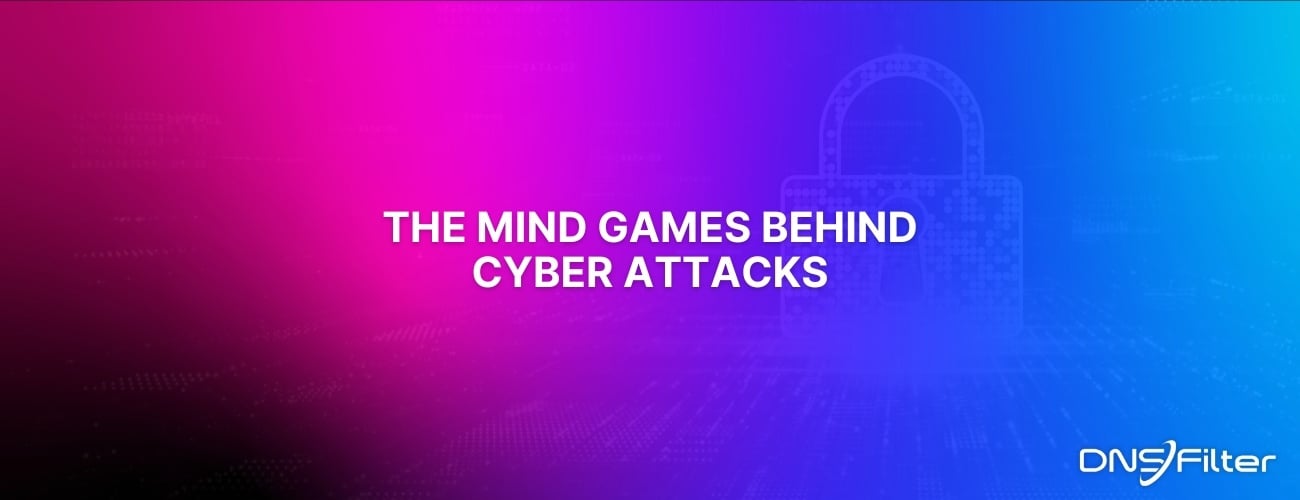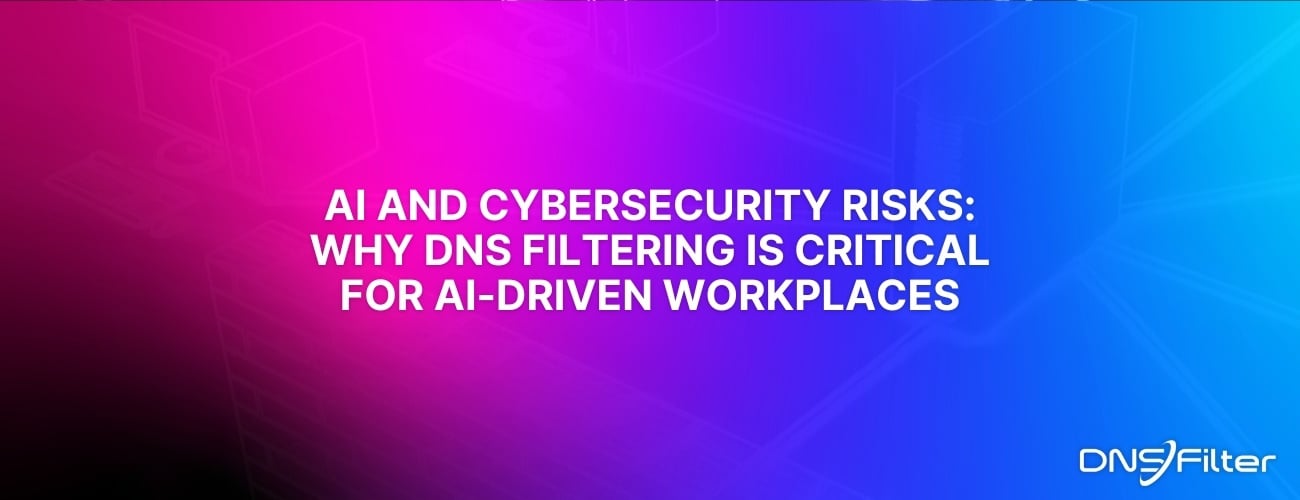Share this
5 Cybersecurity Trends That Will Impact Your Company's Security Measures in 2023
by Jenna Bunnell on Jan 25, 2023 12:00:00 AM
Cybersecurity threats have intensified in recent years, with cyber attacks rising by 28% in the third quarter of 2022 compared to the third quarter of 2021. The impact of such a rise can be immense. Targeted organizations face a loss of productivity and profit, not to mention reputational damage. After all, if a business cannot keep sensitive data safe, how can they expect clients to have trust in them?
Various factors lie behind this growing threat. For example, the recent shift to cloud-based—and often remote—working has opened up new opportunities for cybercriminals to exploit. Moreover, cybercriminals are becoming more skillful at finding weak points for entering networks and identifying weaknesses in software.
As cybercriminals raise their game, so must the organizations they target. Unsurprisingly, businesses are spending more than ever to protect themselves against cyber attacks. One forecast predicts cybersecurity spending and risk management investment will exceed $188.3 billion during 2023.
Cybersecurity impacts many business decisions. For instance, a business choosing a phone system with VoIP will want to know it has robust security built in.
So what cybersecurity trends should businesses be aware of as we move into 2023?
1. The growth of ransomware attacks
Ransomware attacks are on the rise. By 2023, these attacks will cost businesses more than $30 billion. They are a massive threat, and every company should take steps to protect themselves from them.
In a ransomware attack, cybercriminals prevent users or organizations from accessing their data or network. They can then demand a 'ransom' before returning access to the organization. In some attacks, cybercriminals have also threatened to release sensitive data unless the ransom gets paid.
If cybercriminals can find an entry point, taking over an organization's network like this can be scarily easy. Phishing emails are a frequent tool in the cybercriminals' toolkit, tricking an employee to click on a link or give away network security credentials. For example, one food and drink company fell victim to ransomware when an employee opened an MS Word document attached to an email.
Once in, the hackers can potentially encrypt the organization's entire data—whether that is their inventory management program, customer relationship management tool, or data repositories. Then comes the ransom demand.
Virtual Private Networks (VPN) have been used until recently to allow employees remote access to business networks. People often perceive they are secure when logged into a network via VPN. However, this is not the case. While VPN protects your data while in transit, it does not prevent ransomware. For example, employees can still make mistakes that unwittingly allow malware into the network.
Instead, companies are increasingly using Zero-Trust Network Access (ZTNA). It offers more refined remote network access. Users have a more limited degree of network access via ZTNA: Meaning the entire network is less vulnerable. Moreover, it allows closer, real-time monitoring of remote users, helping guard against dangerous or suspicious behavior.
Businesses must give employees powerful tools that support their work wherever they happen to be; for example, great virtual office phone systems. But they need to also ensure robust defenses are in place.
Training is, undoubtedly, also a crucial part of the solution. All employees across the business, at all levels, need to understand the dangers and appreciate how to stay safe. Cybersecurity should be a cultural priority for every business: It is not just the responsibility of cybersecurity professionals.
2. The growth of social engineering attacks
Social engineering (or "human hacking") is an approach cyber attackers are increasingly using. In a social engineering attack, the attacker uses psychological manipulation to trick their target into a security mistake.
Social engineering attacks tend to follow several steps:
- First, the attacker identifies an individual victim at the targeted organization. That might involve gathering data about that individual to tailor the attack.
- Second, the attacker engages the target and endeavors to establish trust. The attacker might fabricate a story, tricking the target into allowing the attacker to penetrate the business. The pivotal moment might be the victim sharing security credentials or opening an attachment. By making such a mistake, the victim, in effect, opens the door to the wolf.
- Third, the attacker is now able to attack, perhaps stealing data or disrupting the business in some way.
- Finally, the attacker will cover their tracks, closing their interaction with the target and hoping that the breach will go undiscovered.
These attacks can lead to data leaks, which can have devastating effects for a company. This can cause a loss of trust from customers in your company, and lost revenue, as well as possible legal ramifications. Just in the last three years, high-profile companies that have been hit include LinkedIn, Alibaba, and Facebook. These three breaches alone have affected over 2 billion users.
Such attacks are a growing trend and demonstrate how skillful and determined attackers can be. They also underline the importance of staff awareness. Employees should be alert at times of change when there may be more risk (for example, during a number porting process). Once again, cross-business training is crucial.
3. CI/CD pipeline vulnerabilities
The growth of CI/CD pipelines in DevOps has introduced both risks and benefits to DevOps. On the plus side, they facilitate rapid service improvements and upgrades. Companies can move nimbly to keep pace with changing market conditions.
However, this agility comes at a cost. The supply chains involved in such DevOps are extensive and complex. They also utilize automation to support quicker building, testing, and deployment. Sadly, this makes them a tempting target for hackers.
If they can find an entry point in the supply chain, they can insert malicious code into the target's service. Unless spotted, the imposter code then gets rolled out to customers - with damaging results. Take the infamous SolarWinds hack of 2020: 18,000 customers installed a patch that hackers had managed to insert into the company's development pipeline. Thousands of personal details were stolen as a result.
Recent years have seen a significant surge in such attacks. The unstable geopolitical situation is increasing the risk: State-backed hackers are likely to continue targeting business and organization supply chains. For example, the war in Ukraine has spilled into cyberspace. Thus, CI/CD security will remain a high priority throughout 2023.
In all: Companies must find ways to defend their DevOps. This is not just about prevention. Organizations also need robust systems to detect intrusions if they do happen. Fortunately, some good tools and practices can help with both prevention and detection.
4. A shortage of security skills
Having the right people with the right expertise is crucial in meeting the cybersecurity challenge. As Vivien Bilquez of Zurich Resilience Solutions puts it, “Humans are the most important factor in cyber resilience.” Accordingly, the number of cybersecurity professionals has grown significantly. As 2023 draws closer, over 1.1 million employees work in cybersecurity in the USA alone.
However, the demand for cybersecurity professionals is vastly outstripping the supply. Over eight years, the number of unfilled cybersecurity posts increased from 1 million (in 2013) to 3.5 million (in 2021). In the US alone, there are nearly 800,000 unfilled openings and not enough professionals to go around. Worse, most analysts do not think this problem will disappear anytime soon.
Various problems lie beneath this. One issue is that job requirements can often rule out most of the field of candidates. For instance, the knowledge and skills these posts require are constantly shifting, making it hard to find up-to-date candidates. Moreover, the credentials many cybersecurity posts demand can be limiting.
This skills shortage is a strategic challenge that all businesses must consider. So how can the cybersecurity talent gap be mitigated? There are several approaches to this problem. To start, companies should do everything they can to retain their existing talent. That means providing a rewarding and motivational experience for their employees.
Beyond that, companies finding it hard to recruit would benefit from a more pragmatic recruitment strategy. For example, candidates may not have the required expertise, but perhaps training could address this. Some companies use train-to-hire programs, where candidates join an intense training boot camp to bring them up to speed.
An added advantage of this approach is that a broader pool of applicants can be encouraged to apply. For example, a candidate may already have valuable expertise with IBM mainframes and (with the extra training) easily reach the required level in cybersecurity.
As we move into 2023, a creative and strategic approach to talent retention and recruitment will be crucial.
5. The rise of AI security measures
Artificial Intelligence for cybersecurity is a massive growth area. The numbers speak for themselves: In 2021, the market had a value of $14.9 billion. By 2030, it looks likely to exceed $130 billion.
Artificial Intelligence leverages a business’s data to support machine learning. Powerful AI cybersecurity tools can then be developed. For instance, AI tools can identify threats and risks, issue warnings or alerts, and trigger prompt protective responses. Machines can achieve all of this much quicker than a human. Artificial Intelligence offers the potential of comprehensive, real-time defense.
For example, user behavior data can support machine learning to identify what constitutes 'normal' behavior on a service for each user. The AI tools developed can then monitor (in real-time) each user's interaction with the service and detect unusual behavior. If an issue is identified, an immediate security action can be triggered (e.g., prompting extra authentication steps).
In this example, AI enables real-time monitoring of how customers use SaaS products. But the value of Artificial Intelligence goes much further. It can also protect internal operations. For instance, used with care, AI tools can massively enhance your DevOps security.
Stay up-to-date on Cybersecurity trends
Cybersecurity deserves to remain a top priority. Attackers are increasingly sophisticated and adept. Fortunately, a growing range of powerful tools are also available to protect businesses. It is crucial for leaders to stay up-to-date with the ever-changing nature of cybersecurity, giving their companies the best chance of staving off attacks.
This article was written by guest Jenna Bunnell - Senior Manager, Content Marketing, Dialpad
Jenna Bunnell is the Senior Manager of Content Marketing at Dialpad, an AI-incorporated cloud-hosted unified communications system that provides valuable call details for business owners and sales representatives with features like Dialpad's visual voicemail app. She is driven and passionate about communicating a brand’s design sensibility and visualizing how content can be presented in creative and comprehensive ways. Jenna has also written for other domains such as Agency Vista and TRAFFIT .
Share this
 Artificial Intelligence in Cybersecurity
Artificial Intelligence in Cybersecurity
The term “artificial intelligence (AI)” was first coined in 1956. While progress stalled for many years, we can thank IBM for sparking real interest in AI as viable technology: First in 1997 when the computer Deep Blue defeated a chess champion and again in 2011 when Watson won Jeopardy!
 The Mind Games Behind Cyber Attacks
The Mind Games Behind Cyber Attacks
Hackers have long understood that the most sophisticated firewall is no match for a well-placed psychological trick. While many focus on the technical prowess of cybercriminals, the real magic often lies in their ability to manipulate human behavior. By exploiting our natural tendencies and cognitive biases, hackers can slip past even the most robust security systems. It's not just about cracking codes; it's about cracking the human psyche.
 AI and Cybersecurity Risks: Why DNS Filtering is Critical for AI-Driven Workplaces
AI and Cybersecurity Risks: Why DNS Filtering is Critical for AI-Driven Workplaces
Artificial intelligence is transforming business operations, automating everything from customer service to data analysis. But with these advancements come new security challenges. AI-driven cyber threats are becoming more sophisticated, enabling attackers to automate phishing campaigns, generate malware, and exfiltrate sensitive data at scale. Without proper safeguards, AI tools can unintentionally leak corporate secrets or connect to malicious ...


